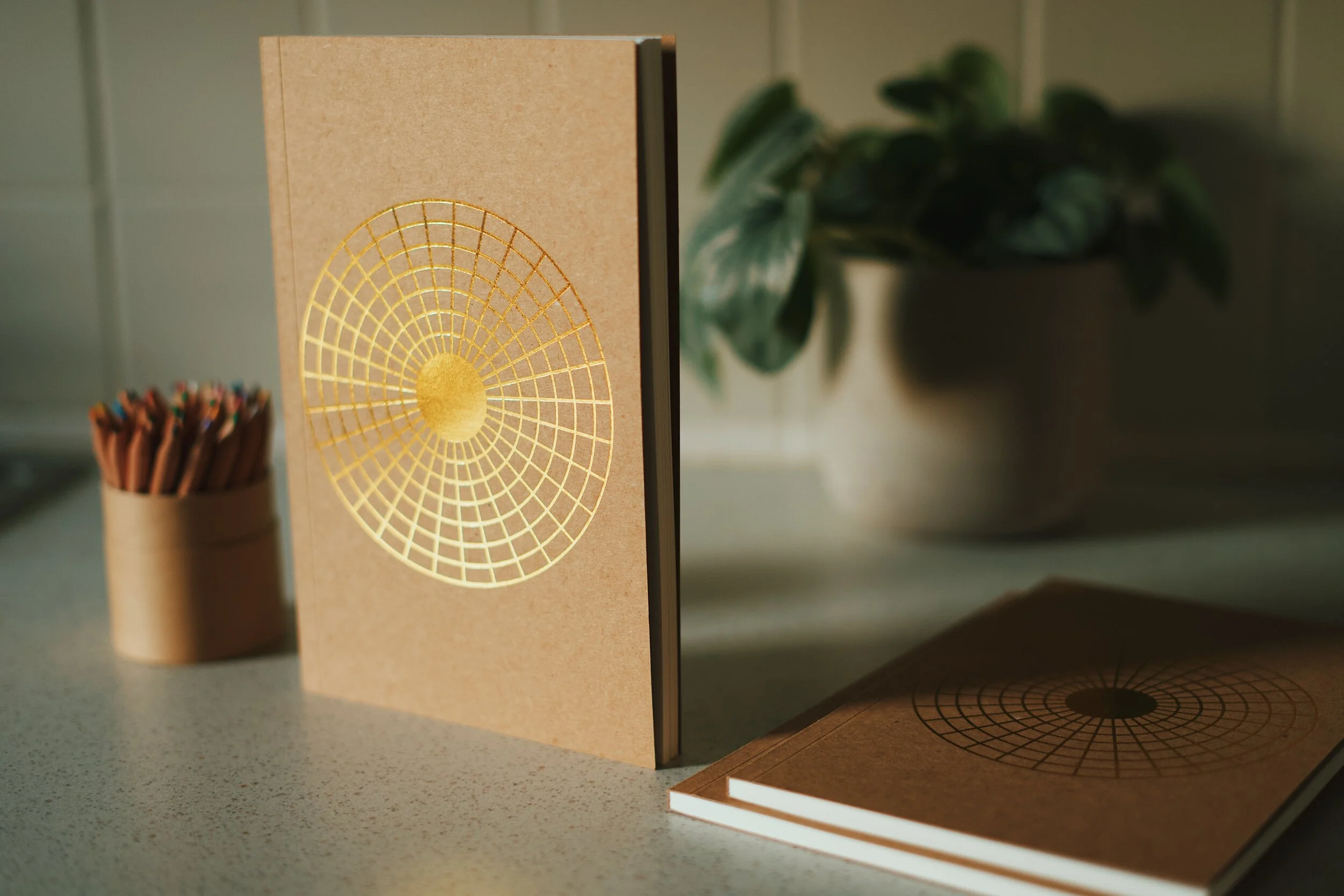Resilience Journal
A photo of the Resilience Journal publication- three journals sit on a counter, one of them is standing up. The cover has a gold stamp in the shape of the circular data visualization framework. There are colored pencils to the left of the journal and leafy potted plant in the background.
BUILDING A Collective TOOL
The Resilience Journal is a tool dedicated to visualizing the overlooked, soft data in our lives. I created this journal as a means of tracking my illness experience in a way that felt more representative of how I experience chronic illness. Soft data (as opposed to hard data) is nuanced, fuzzy, qualitative, expressive– this is something I see very little datasets of when it comes to illness.
For the year of 2019, I have been tracking 7 different dimensions of my illness every day: Feeling it (chronic pain), logistical problems, body image, social pressures, doctor’s visits, future visions, and past memories. I have been doing this as a means of holding space for illness— giving it a consistent, ritualistic place to be honored for what it is in its wholeness— while also considering how this could be used as an advocacy tool.
Over the months, I have been giving prototypes to friends with chronic conditions, getting feedback, giving presentations, and holding journaling and movement workshops for the chronically ill and disabled. In these workshops we would use the journal as a framework for conversation, active listening, and creative expression with our bodies and minds. I began to realize that the journal served more than just a personal tool for myself to keep track of the nuances of living with a chronic condition– it became a collective access point for acknowledgement and self-acceptance– giving people a tool to put into words, images, and ritual their complex living experience on their own terms.
With support from Eyebeam, Laundromat Project, and Denniston Hill, I am excited to release the first edition of the Resilience Journal. I am looking forward to seeing how people will use this– as a conversation, a tool, a data artwork, or beyond. The Resilience Journal is designed to illuminate the ill/disabled experience, make space to honor pain, and hopefully over time, become a living data archive of acts of resilience by chronically ill and disabled bodies.
How it works
As those who sustain an illness/ disability, we often have a biodata footprint– where our health is quantified by medical practitioners through various medical tests and procedures. Instead of just focusing on the biodata of our illness, I am particularly interested in tracking the data that is usually overlooked in the experience of living with illness– the everyday, hard-to-grasp, “soft” data sets that are much more like poetry.
The journaling process is comprised of three main parts: Gathering Data, Organizing Data, and Tracking Data. In the “Gathering Data” section, perhaps the most time-intensive section, one is prompted with questions directed towards the mind, the body, and the bodymind to answer. Through these prompts, one will begin to identify, observe, and examine deeply the different aspects of their illness experience for themselves. In the “Organizing Data” section, one begins to hone in on what they want to track over the next months, seeing patterns, grouping events together, and outlining their dimensions of being.
In the final “Tracking Data” section, the journal culminates into a circular data visualization. With each instance tracked, a section of the circle is filled in, creating a month-long, daily ritual of mark-making and self-engagement. This methodical form of tracking creates a distinctive wheel of shades and colors personal to each individual’s illness experience, and concurrently a unique dataset and data visualization of a complex, surviving way of being.
Timelapse of the May Resilience Journal spread- a circle on the right page slowly filling up slice by slice with green hues. Music by David Britton, sampling the sounds of my body and processing the sounds with a synthesizer.
Data-Tracking As A POLITICAL ACT
The Resilience Journal uses the idea of data-tracking as an objective tool for holding space for illness. The data is neither good or bad, it just… is. I wanted to show to myself and others that living with chronic illness/ disability is not always something that needs to be fixed or struggled against.
Disability scholar Colin Cameron talks about “the disabling gaze”- something disabled people often experience in which they are often required and expected in other people’s eyes to experience their own embodiment negatively. He writes there is a social expectation that “Impairment can only be endured or struggled against, but never lived in acceptance and enjoyment of self” (source).
This journal becomes a tool in refusing to conform to that social requirement.
I began to realize creating a tool amidst dozens of self-care apps, biofeedback tech, and healing tactics– all of which can be deeply intertwined with our solution-oriented, ableist, capitalist society– perhaps the most urgent, fundamental thing we can do is to acknowledge our living experience and perceive illness in its wholeness, not as a deficit.
This journal has been a tool in revealing and re-valuing my experience living with my illness– not simply in better understanding when I have flares, but also when the society we live in quietly ignores and devalues those of us living with illness and disability.
For more information on collectively moving towards justice, check out Disability Justice- a working draft by Patty Berne of Sins Invalid.
The Resilience Journal seeks to be a self-reflection, advocacy, and community-building tool, residing on the shoulders of Disability Justice giants. In releasing this publication, I wish you use this journal in a way that invokes care within your life, and then hopefully, in the lives of others.
Thank you for reading and happy data-tracking.
– YYL
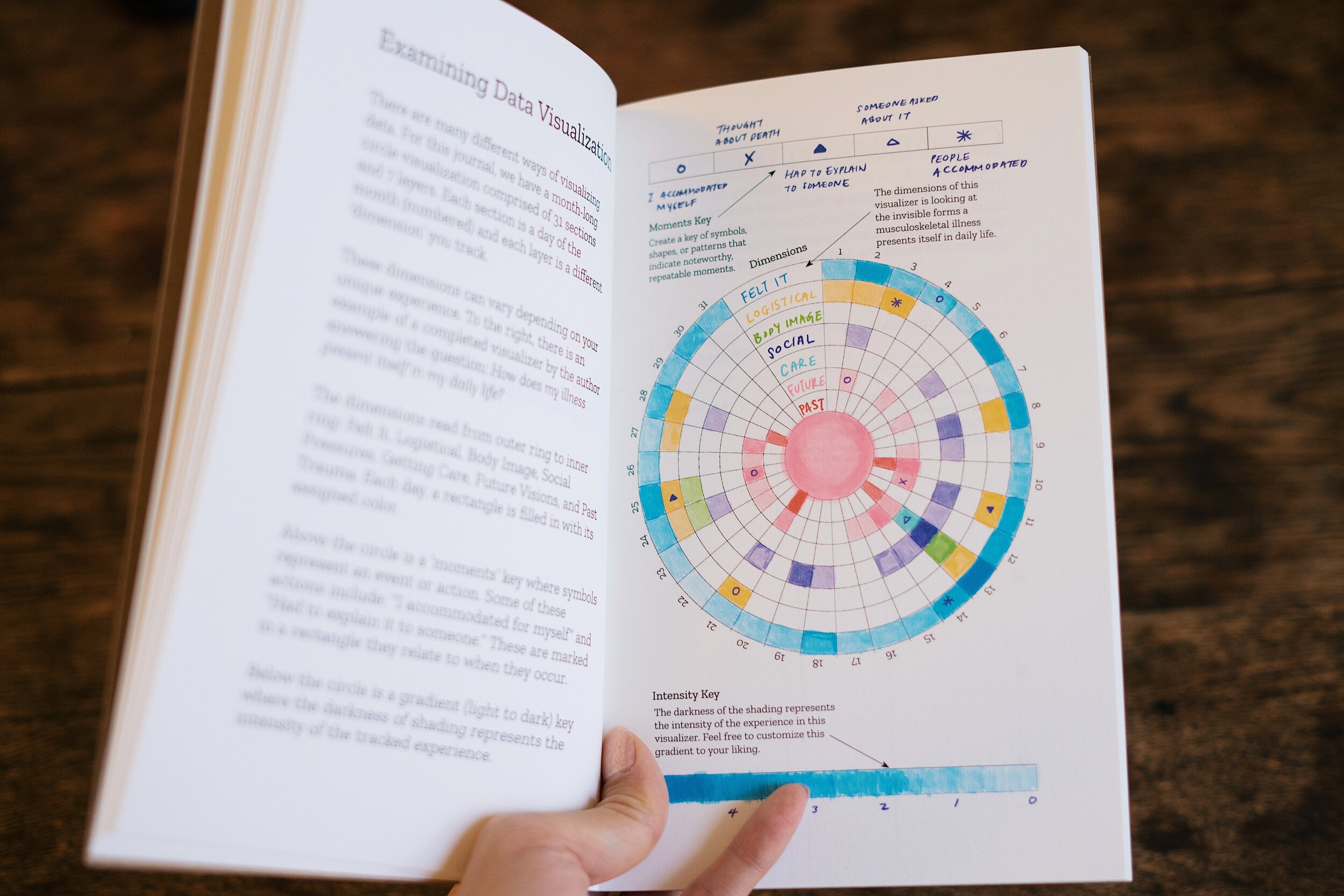
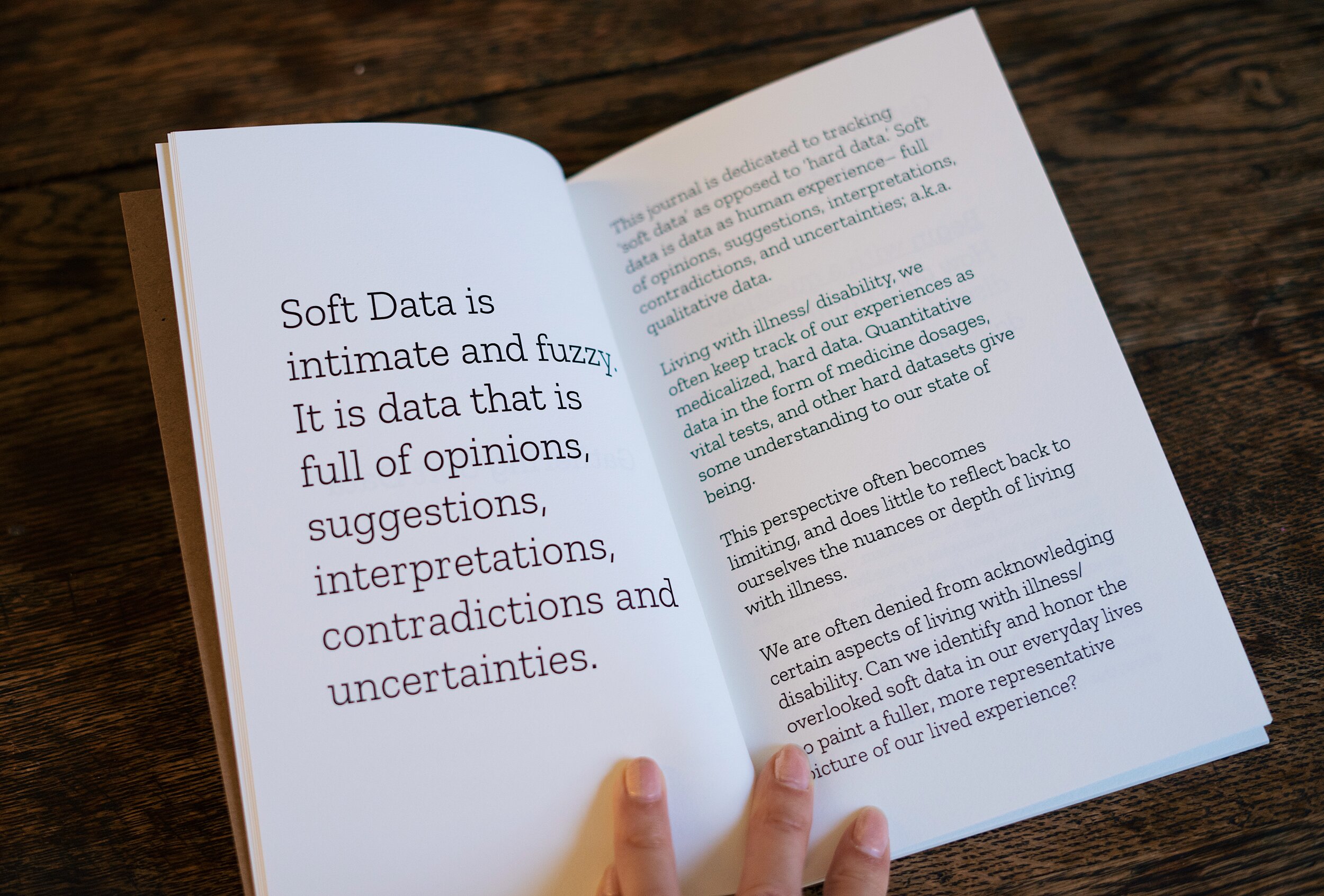
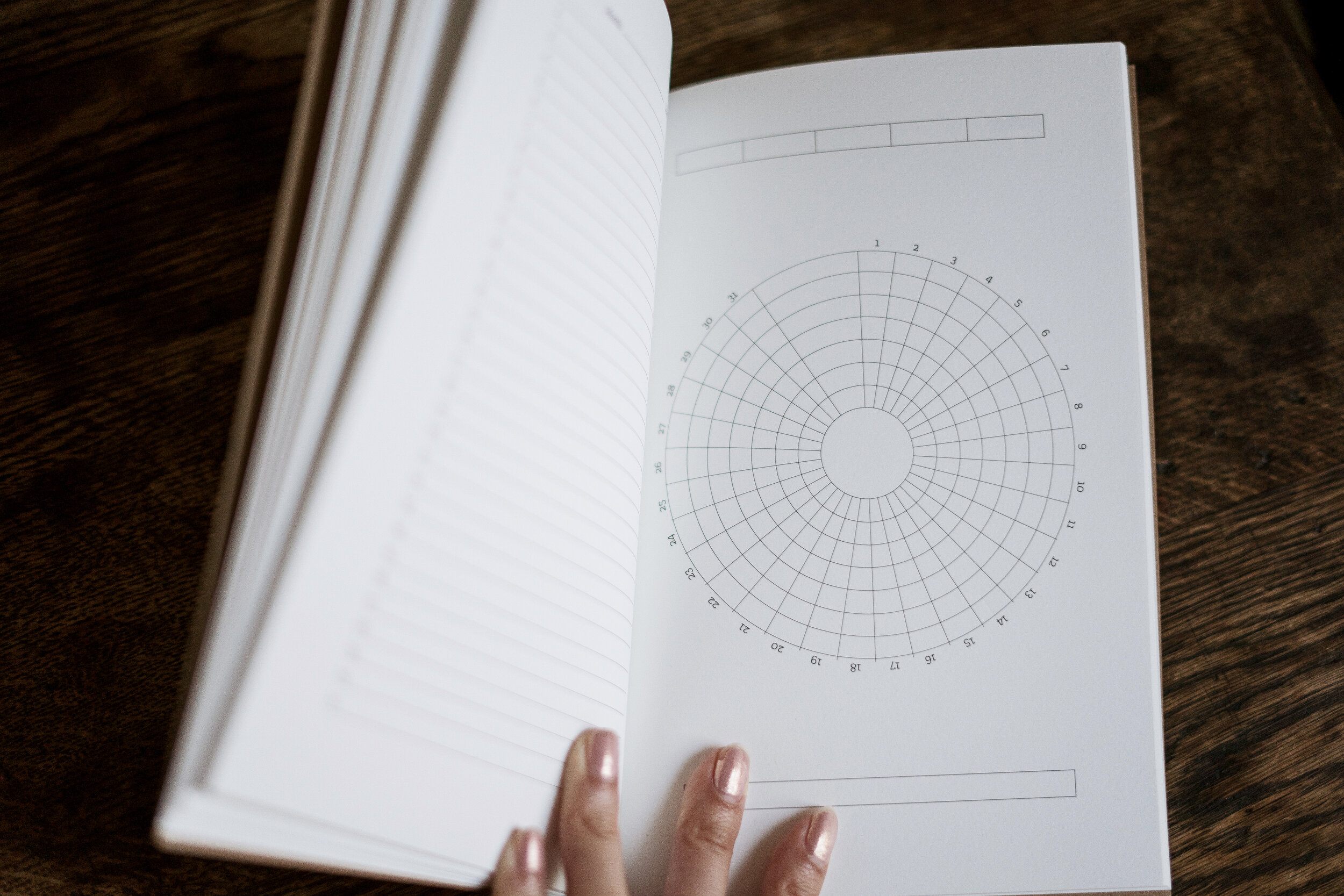
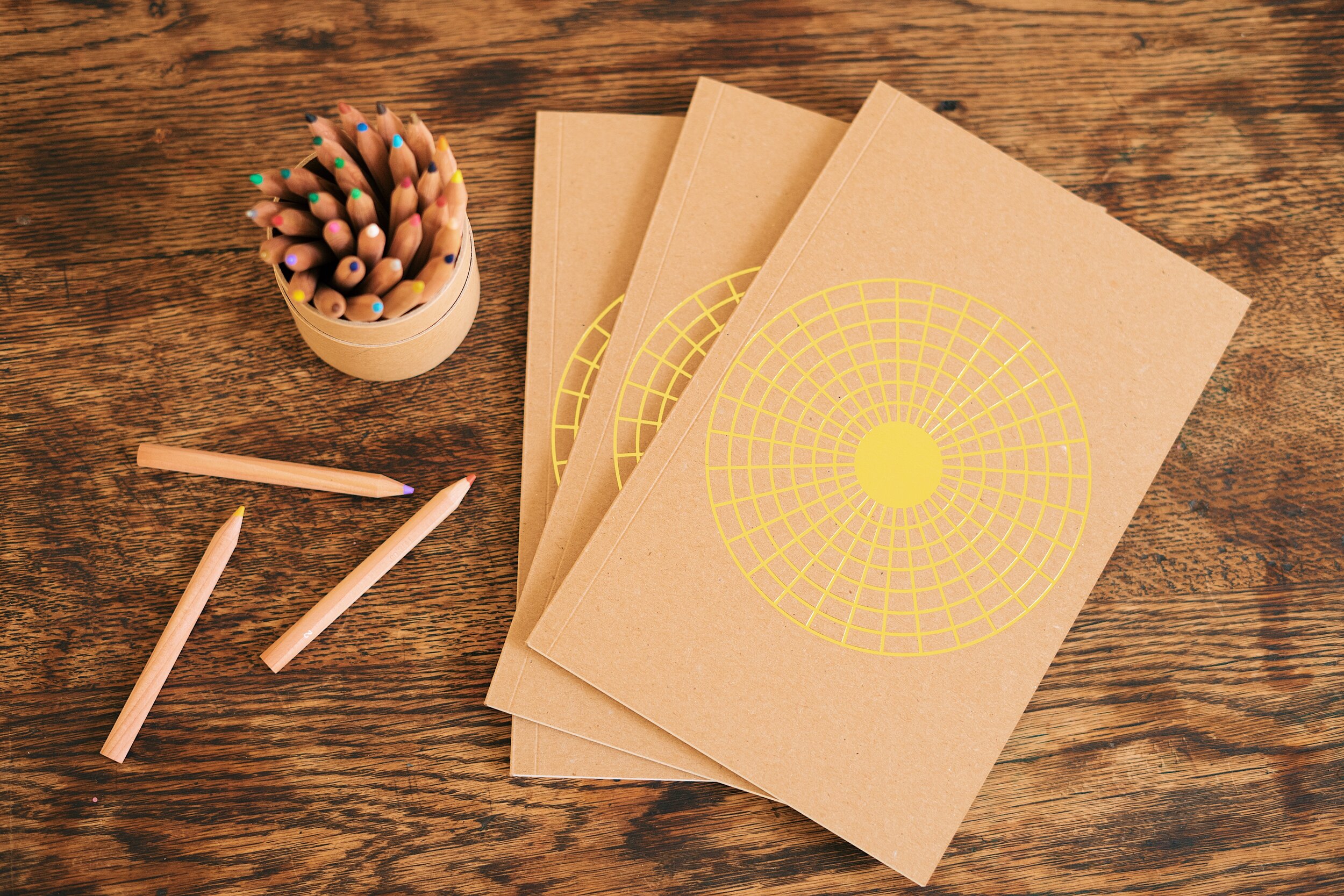
“...healing as not a way to return to a past state but a process of becoming.”
SELECTED PRESS & SHOWINGS
Crip Ecologies, 2022 - Art Gallery of Windsor, Ontario, CA
#CripRitual, 2022 - Doris McCarthy Gallery, Toronto, CA
Testudo, 2022 - Creation, Collaboration, & Resilience: Interview with Yo-Yo Lin
NowThis, 2021 — Meet Interdiscplinary Artist Yo-Yo Lin
CultureHub, 2021— Soft Data and Feedback as Nourishment – Reflecting with Resident Artist Yo-Yo Lin
Rituals, 2019 - Marlene Meyerson JCC, New York, NY
This journal is developed by artist Yo-Yo Lin. She currently identifies as chronically ill and disabled
and lives and works in NYC deepening her knowledge in health trauma, tool-making, and community-building.
The ‘Resilience Journal’ is one component
of ‘Modes of Embodiment’– a digital and physical toolkit that seeks to be an expressive resource and living archive by and for the chronically ill and disabled
‘Modes of Embodiment’ was made possible with support from Eyebeam. This journal was produced with support from Eyebeam, The Laundromat Project, and Denniston Hill in 2019.
The second edition of this journal is in the works.
If you would like to share your journal pages and be a part of a growing database of acts of resilience, get in touch:
embodiment.archive@gmail.com
